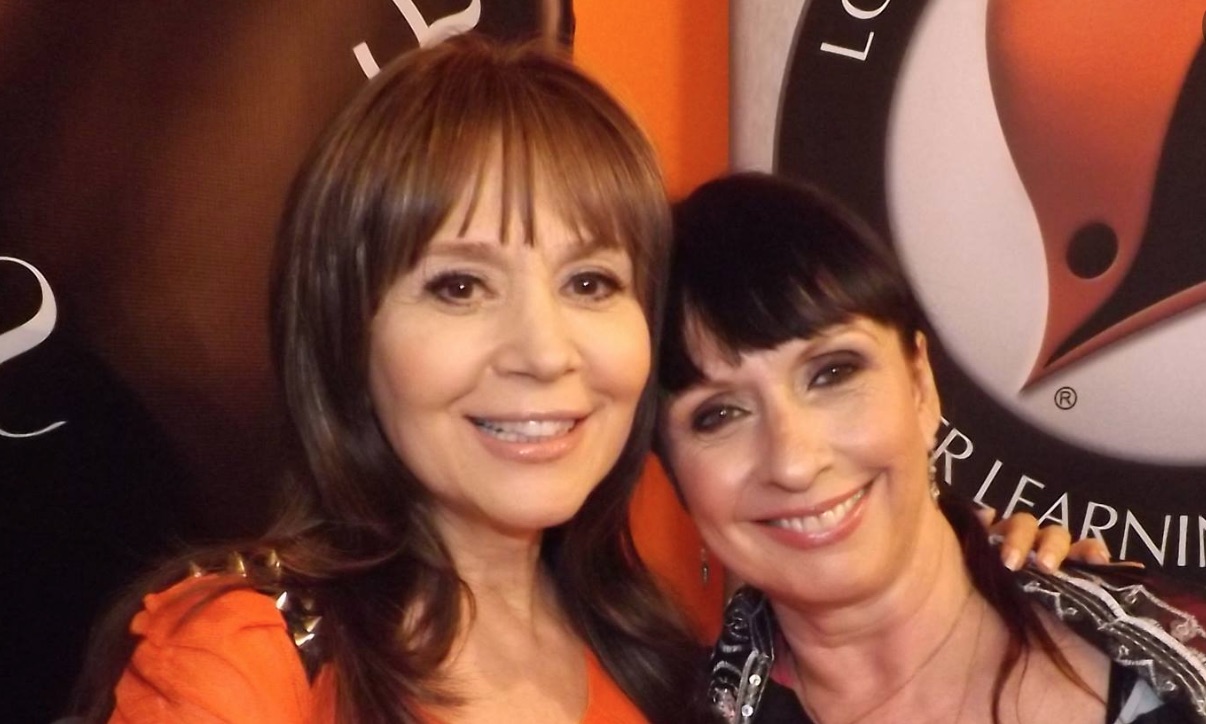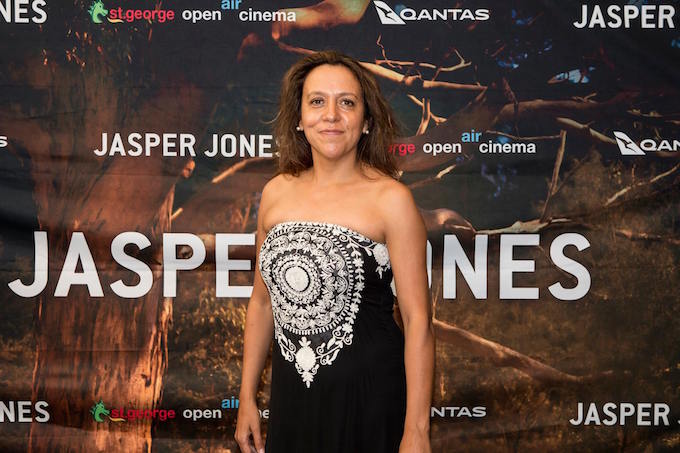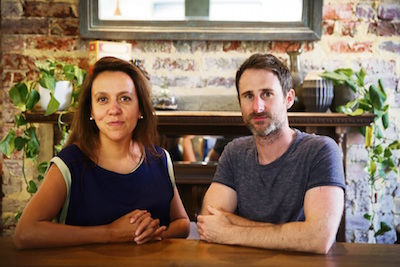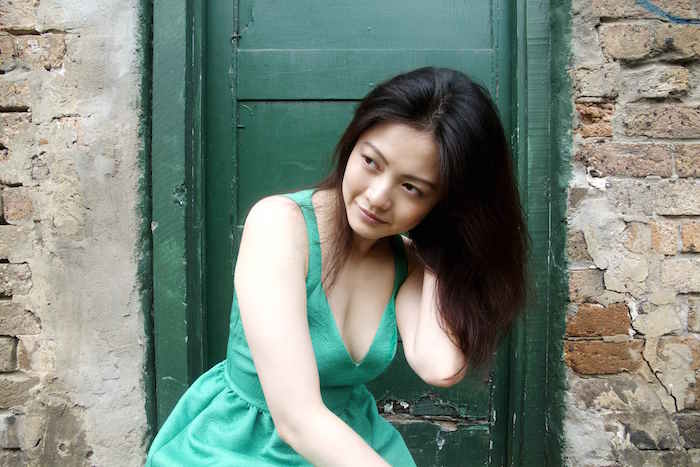THE BEDROOM: THE ANNA BROWNFIELD INTERVIEW
 Thursday, March 9, 2017 at 11:48AM
Thursday, March 9, 2017 at 11:48AM Like the trailblazing feminist pornographer Candida Royalle before her, Anna Brownfield has determinedly chosen the path less travelled to fulfil her artistic vision. The Melbourne-based filmmaker has garnered international acclaim for her works The Money Shot (2007), The Band (2009) and Making it Handmade! (2010), cinema that challenges the mainstream definition of pornography. Her latest feature, The Bedroom, captures key moments in the development of Australian sexual culture across 50 years, all set within the walls of the particularly action-packed title space. Ahead of its US premiere at the CineKink 2017 Film Festival, Anna Brownfield spoke frankly with SCREEN-SPACE about her unique status in the Australian film sector and flying the flag for ethical erotica…

Pictured, above: Anna Brownfield, left, with The Bedroom actress Aeryn Walker (c) Megan Spencer 2014
SCREEN-SPACE: In general terms, how would you rate the depiction of sexuality on Australian cinema screens?
ANNA BROWNFIELD: I think Australians have a healthy attitude towards sex and sexuality on screen. However, what we see on Australian screens ebbs and flows depending upon our political climate. A lot has changed since the introduction of the R rating in the 1970s and the flourish of sexploitation cinema. One of my favourite is Fantasm directed by Richard Franklin under the pseudonym Richard Bruce, especially the scene where a housewife takes revenge on a thief, on the kitchen table using household items. These films reflected the changing attitudes to sexuality of the time but were made predominately from a male perspective. Now, I think our mainstream film industry in Australia is quite conservative and likes to play it safe when it comes to funding films. While we have a history of sexploitation cinema, I can’t see the funding bodies supporting this type of film today.
 SCREEN-SPACE: Is there a filmmaking subculture that strives to bridge the gap between conventional narratives and graphic sexuality? Is it possible that such a movement could some day flourish?
SCREEN-SPACE: Is there a filmmaking subculture that strives to bridge the gap between conventional narratives and graphic sexuality? Is it possible that such a movement could some day flourish?
ANNA BROWNFIELD: When I started making explicit films, there were quite a few art house films being distributed that had storylines and explicit sex; Basie Moi, Nine Songs, Intimacy, Romance, Sex and Lucia to name a few. But this is nothing new, have a look at lots of films made in the 70s! The directors of those films were saying we see actors really crying on screen, so why not see them have real sex. For me, it was about making films that focused on women’s sexual desires and fantasies, objectifying the male body and bring a female gaze to the genre. That coupled with storylines, feminism, high production values and being creative with the visual language to create something sensual and erotic but also explicit. (Pictured, above; Lily Rei and Rob Paulson in 'The 1960s' from The Bedroom)
SCREEN-SPACE: Despite spanning 50 years, is there a 'constant' that your depictions of sexuality in The Bedroom capture? The aesthetics change greatly, but what stays the same?
ANNA BROWNFIELD: Honest, authentic depictions of sex and sexuality, produced in an ethical manner that give agency to performers and promote safe sex.
SCREEN-SPACE: Where do your films in general, and The Bedroom in particular, sit within the broad definition of 'pornography'? Few films employ both graphic imagery and historical context such as The Bedroom.
 ANNA BROWNFIELD: When I began, I called my films feminist erotica, because when I used the word porn, people made assumptions about the types of film I made regarding aesthetics and sexual stereotypes. I frequently use the word explicit and, depending where I am, will use the word pornography. When I made my first explicit feature, The Band, my producer was worried that it wasn’t explicit enough to be called porn but too explicit to be arthouse. In the end, it was distributed by both sectors of the industry. The Bedroom screened at the Porny Days film festival in Zurich, Switzerland. I couldn’t attend but one of my friends said there was a lot of discussion after the screening, about if this was in fact a porn film or not. One of the things I endeavour to do is to push the genre.
ANNA BROWNFIELD: When I began, I called my films feminist erotica, because when I used the word porn, people made assumptions about the types of film I made regarding aesthetics and sexual stereotypes. I frequently use the word explicit and, depending where I am, will use the word pornography. When I made my first explicit feature, The Band, my producer was worried that it wasn’t explicit enough to be called porn but too explicit to be arthouse. In the end, it was distributed by both sectors of the industry. The Bedroom screened at the Porny Days film festival in Zurich, Switzerland. I couldn’t attend but one of my friends said there was a lot of discussion after the screening, about if this was in fact a porn film or not. One of the things I endeavour to do is to push the genre.
As a society, we have come to accept a formulaic depiction of explicit content, or in a term coined so beautifully by Candida Royalle as “porn by numbers”. Porn and its consumption is still surrounded by so much taboo, I think we often don’t question what we see on screen and I wanted to provide an ethical alternative to that. (Pictured, above: Chloe B in 'The 1970s' from The Bedroom)
SCREEN-SPACE: In terms of the production, were the actors told where the scenes had to go and what specifics you were looking for? Or did you let them dictate the action?
 ANNA BROWNFIELD: The dialogue in each scene was scripted. In the 1980s sequence, (actor) Christian Vega rewrote a lot of the dialogue as it was important to him that he honour and be true to his community, which I was more than happy for him to do. Regarding the explicit scenes, the performers would discuss it together beforehand and negotiate what they would and wouldn’t do. On set, I would sit down with them and do a basic blocking of what they wanted to do and how they would move around the space. As it was a historical piece, I also discussed with the performers about making sure the sex depicted represented the times and who that character was and were they would be in their sexual journey. (Pictured, above: co-stars Emerald and Bandit in 'The 2010s' from The Bedroom)
ANNA BROWNFIELD: The dialogue in each scene was scripted. In the 1980s sequence, (actor) Christian Vega rewrote a lot of the dialogue as it was important to him that he honour and be true to his community, which I was more than happy for him to do. Regarding the explicit scenes, the performers would discuss it together beforehand and negotiate what they would and wouldn’t do. On set, I would sit down with them and do a basic blocking of what they wanted to do and how they would move around the space. As it was a historical piece, I also discussed with the performers about making sure the sex depicted represented the times and who that character was and were they would be in their sexual journey. (Pictured, above: co-stars Emerald and Bandit in 'The 2010s' from The Bedroom)
SCREEN-SPACE: It's been over a two decades since your first short, Playing; over a decade since The Money Shot closed MUFF and became the toast of the festival. How would you describe your journey, working in your chosen form of filmmaking/storytelling?
ANNA BROWNFIELD: At times it has been hard, as I have chosen to work outside of the mainstream film industry, but continue to make other films without explicit content. My explicit films tend to do better overseas, particularly in Europe, than they do here in my home country. I often look back and think, how did I manage to make that? I work with little to no budget, so it's lots of hours unpaid and doing other jobs to make ends meet. However, working with very small budgets, makes me inventive and resourceful and provides me with complete creative freedom. I have times where I question what and why I do what I do, but at the same time I love it and it provides me with an outlet for self-expression. That coupled with the faith that people will like what I do and enjoy it if not now, in the future.
THE BEDROOM screens at Cinekink 2017 in New York on March 17; it is available to download via Poison Apple Productions.














